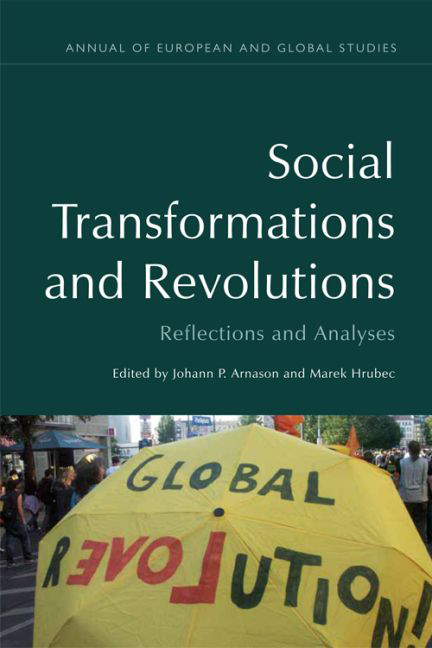Book contents
- Frontmatter
- Contents
- 1 Introduction
- 2 A Trialogue on Revolution and Transformation
- 3 Revolutions, Transformations, Civilisations: Prolegomena to a Paradigm Reorientation
- 4 The Transformation of Capitalism and the Limits of Democracy
- 5 From Civilisational Crisis to Revolutionary Transformation?
- 6 Environmental Crisis and Political Revolutions
- 7 Communists and Social Democrats in the Hungarian Soviet Republic
- 8 Can Political Participation Become Dangerous for Democracy? Participatory Experiences in Brazil and the Reactions Against Them
- 9 Hidden Revolutionary Processes in 1990s India?
- 10 Matching Reforms of Political and Economic Systems of China
- Notes on the Contributors
- Index
7 - Communists and Social Democrats in the Hungarian Soviet Republic
Published online by Cambridge University Press: 15 September 2017
- Frontmatter
- Contents
- 1 Introduction
- 2 A Trialogue on Revolution and Transformation
- 3 Revolutions, Transformations, Civilisations: Prolegomena to a Paradigm Reorientation
- 4 The Transformation of Capitalism and the Limits of Democracy
- 5 From Civilisational Crisis to Revolutionary Transformation?
- 6 Environmental Crisis and Political Revolutions
- 7 Communists and Social Democrats in the Hungarian Soviet Republic
- 8 Can Political Participation Become Dangerous for Democracy? Participatory Experiences in Brazil and the Reactions Against Them
- 9 Hidden Revolutionary Processes in 1990s India?
- 10 Matching Reforms of Political and Economic Systems of China
- Notes on the Contributors
- Index
Summary
Introduction
IN THIS CHAPTER I intend to challenge the usual interpretation of the ‘Kun regime’ (Seton-Watson and Seton-Watson 1981: 365) as merely an import of the Leninist model to Hungary, and Kun himself, as, in Robert Seton-Watson's words, ‘Lenin's Magyar lieutenant’ (ibid.: 354). That view neglects the regime's inner social basis, its intellectual foundations and the rather wide social support which undoubtedly existed at the beginning of the Soviet Republic, even though it had diminished and then disappeared by the end. The proletarian dictatorship was not just Béla Kun's regime: its basis and its matter, so to speak, was social democracy, and a handful of Communists tried to give form to this matter. The Bolsheviks themselves regarded the Soviet Republic as an unhappily mixed form of government, Communist and socialist.
The consideration of the 1918 bourgeois revolution, led by Count Mihály Károlyi, and the 1919 proletarian one as two phases of one single revolutionary process may be helpful to the proper evaluation of the role played by the Social Democrats in these events. Afraid as Hungarian intellectuals were of unleashing the unknown forces of revolution, they could not get away from the idea that the events were following (and would follow) the inherent logic of the 1789 French revolution. Károlyi's retrospective account is typical on this point. In a speech delivered to parliament in February 1918, he voiced his growing fear of revolutions in Hungary and around the world (Hajdu 1958: 28). After the so-called ‘chrysanthemum revolution’ at the end of the war, he doubted that the way he had assumed power could be interpreted at all as a revolution. On the other hand, he painted a revolutionary portrait of his peers, describing the Social Democratic leader Zsigmond Kunfi as Danton and the Lower House president and clergyman János Hock as the abbot Sieyes – so that the arrival of Tibor Szamuely as a Bolshevik Saint-Just, accompanied by a terrorist squad, was perfectly in tune with Károlyi's ideas and fears (Károlyi 1982: 153, 170, 186). Social Democrats shared Károlyi's views on the escalating revolutions. On 8 January 1919, during a meeting of the workers’ council, the socialist leader Sándor Garbai proposed the establishment of a pure socialist government.
- Type
- Chapter
- Information
- Social Transformations and RevolutionsReflections and Analyses, pp. 121 - 147Publisher: Edinburgh University PressPrint publication year: 2016

